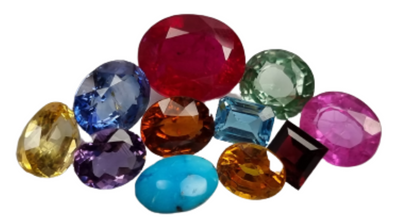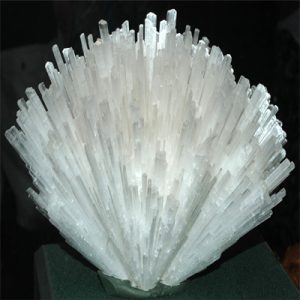Scolecite: Gemstones Information
Scolecite is a fascinating zeolite mineral renowned for its delicate crystal structures and remarkable properties. As a member of the zeolite group, scolecite exhibits unique characteristics that make it valuable both scientifically and aesthetically. Below is a detailed exploration of scolecite, covering its properties, occurrences, uses, and significance.
Properties:
Scolecite is a hydrated calcium aluminum silicate mineral with the chemical formula CaAl₂Si₃O₁₀·3H₂O. It crystallizes in the monoclinic crystal system, forming long, slender prismatic crystals with a needle-like appearance. The mineral often occurs in radiating or fibrous aggregates, giving it a delicate and ethereal quality. Scolecite typically has a pearly to vitreous luster and can be colorless, white, pink, yellow, or peach in hue. It has a Mohs hardness of 5 to 5.5, making it relatively soft compared to other minerals.
Occurrences:
Scolecite is primarily found in basaltic and andesitic volcanic rocks, where it forms as a secondary mineral in cavities and vesicles. Major deposits of scolecite have been discovered in regions such as India, Iceland, Brazil, and the United States. It often occurs alongside other zeolite minerals, such as stilbite, heulandite, and natrolite, as well as various secondary minerals formed through hydrothermal alteration processes.
Uses:
Mineral Specimens: Scolecite’s delicate crystal structures and attractive colors make it a popular choice for mineral collectors and enthusiasts. Fine-quality scolecite specimens with well-defined crystals are highly sought after for display in mineral collections and museums.
Metaphysical Properties: In metaphysical practices, scolecite is believed to possess calming and soothing energies that promote relaxation, tranquility, and emotional balance. It is often used in meditation and spiritual healing to facilitate connection with higher realms and enhance intuition.
Decorative Stone: Due to its aesthetic appeal and unique crystal habits, scolecite is sometimes used as a decorative stone in lapidary and ornamental applications. It can be cut and polished into cabochons, beads, and carvings for use in jewelry, sculpture, and other decorative objects.
Significance:
Scolecite holds significance in both scientific research and spiritual traditions. Its intricate crystal structures and zeolitic properties have attracted the attention of mineralogists, geologists, and crystallographers interested in understanding the formation and behavior of zeolite minerals. Additionally, scolecite’s association with calming and healing energies has made it a valuable tool for practitioners of alternative and holistic therapies seeking to promote physical, emotional, and spiritual well-being.
Conclusion:
In conclusion, scolecite is a captivating mineral renowned for its delicate crystal structures, attractive colors, and metaphysical properties. Whether admired for its aesthetic appeal, studied for its scientific significance, or utilized for its healing energies, scolecite continues to captivate individuals with its beauty and versatility. As appreciation for minerals and crystals grows, scolecite remains a noteworthy addition to the world of gemstones and mineral specimens, enriching both scientific knowledge and spiritual practices alike.





